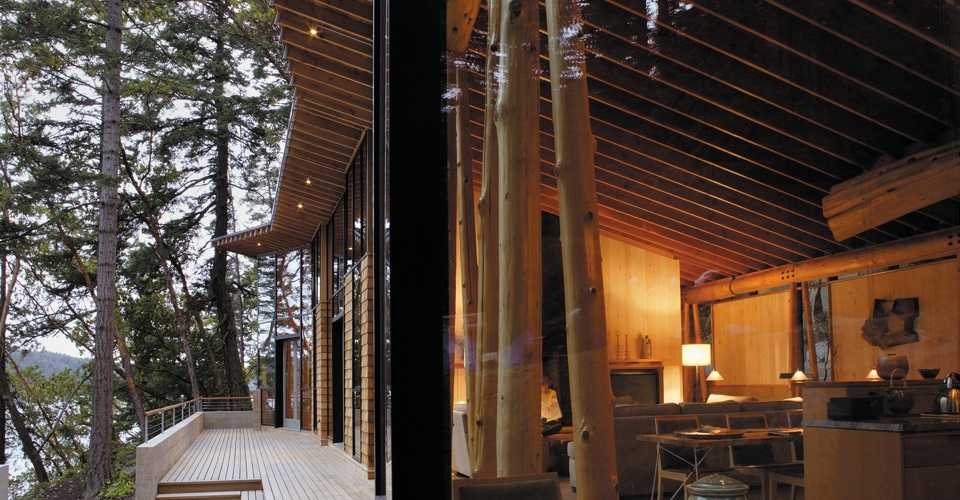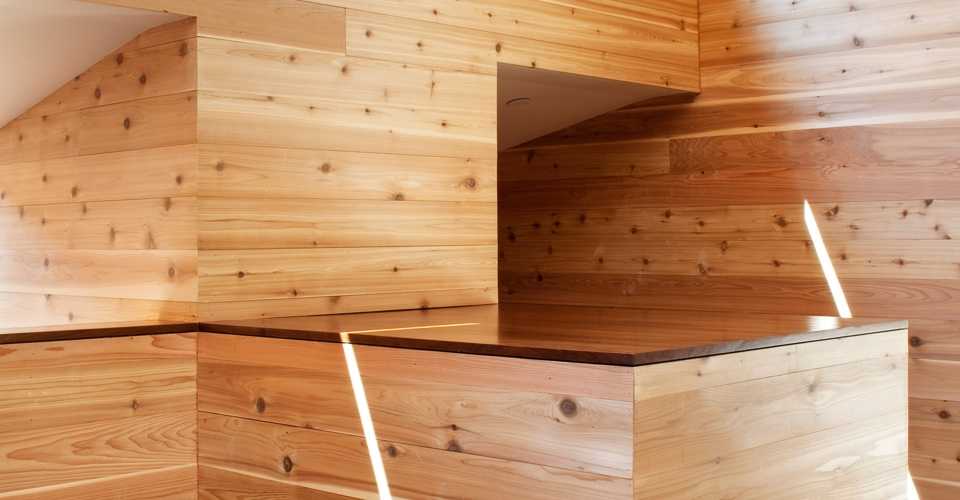Back
Back
Back
Back
Back
Back
Back
Back
Back
Back
USA & Canada
Choosing a Finish For Western Red Cedar Outdoors
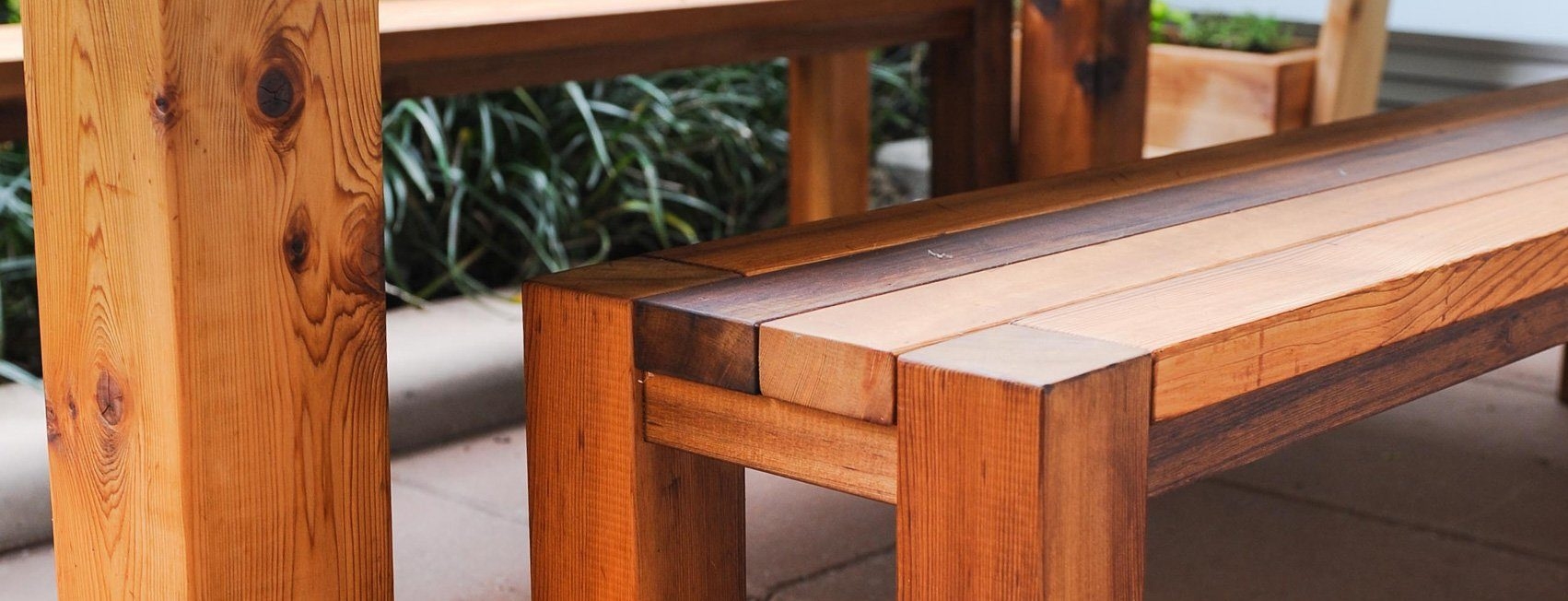
Tips on Finishing Western Red Cedar Outdoor Applications
How to Apply Finishing to Real Cedar
 How a finish is applied to cedar is as important for durability and good performance as is the finish-substrate combination chosen for the job. Finishes can be brushed, rolled, sprayed or applied by dipping. The application technique, the quality and quantity of finish applied, the surface condition of the substrate, and the weather conditions at the time of application can substantially influence the life expectancy of the finish. The application guidelines suggested here should be followed in concert with the manufacturer’s directions for the product.
How a finish is applied to cedar is as important for durability and good performance as is the finish-substrate combination chosen for the job. Finishes can be brushed, rolled, sprayed or applied by dipping. The application technique, the quality and quantity of finish applied, the surface condition of the substrate, and the weather conditions at the time of application can substantially influence the life expectancy of the finish. The application guidelines suggested here should be followed in concert with the manufacturer’s directions for the product.
Paints
Paints of all types such as vinyl-acrylic, modified-acrylic, and oil-based top coats are all suitable for cedar but test results show that good-quality 100%-acrylic formulations perform best. To achieve maximum paint life, follow these steps:
- On bare new or restored cedar, apply one coat only of water-repellent preservative (1% or less of wax by volume and content). Allow it to dry for the period of time recommended by the manufacturer. If the wood has been dip treated, a longer drying time may be needed. Do not paint before the solvent from the water-repellent preservative has evaporated because the paint may then be slow to dry, may discolor, or dry with a rough surface.
- Apply a good quality stain-blocking primer as soon as possible after the water-repellent has dried. The primer coat is very important because it forms a base for all succeeding paint coats and should be used whether the top coat is oil-based or latex-based. Application rates recommended by the manufacturer should be followed.
- Apply the top coat over the primer. If two top coats are to be applied, allow the first to cure for the period recommended by the manufacturer before applying the second. In cold or damp weather, allow extra time between coats.
Water-Repellent Preservatives
Water-repellent preservatives should be used only on newly manufactured bare cedar, on restored bare cedar, or on cedar previously treated with the same type of product. Application of preservative by brush, pad, or roller followed by thorough back-brushing is equally effective. When cedar is treated after the structure has been completed, liberal amounts of the solution should be applied to all lap and butt joints, edges and ends of boards. Other areas vulnerable to moisture penetration, such as below doors and window frames, also need to be treated.
When used as a natural finish, the service life of a water-repellent is only one to two years depending upon the wood and the exposure. Treatments on textured surfaces generally last longer than those on smooth surfaces. Dip treatment prior to installation or repeated brush treatment to the point of refusal will enhance the finish durability. The more finish absorbed by the wood, the longer the service life. If a water-repellent preservative is used as a pre-treatment before painting, apply only a single coat, and use caution to avoid excessive build-up.
Semi-Transparent, Oil-Based Penetrating Stains

Semi-transparent, oil-based penetrating stains may be applied by brush, spray, pad, or roller. Brushing will usually give the best penetration and performance. Spray or roller application followed by back-brushing is also an acceptable method of application. These oil-based stains are generally thin and runny, so application can be messy. Lap marks can be prevented by staining continuous lengths. This method prevents the front edge of the stained area from drying before a logical stopping place is reached. Working in the shade is desirable because the drying rate is slower. Stain that has been applied by spray without back-brushing is particularly prone to show blotchy patterns as it weathers.
Two coats of penetrating oil-based stain on textured cedar will provide longer service life than one coat, but only if the wood will accept the second coat. Stir the stain thoroughly during application to prevent settling and color change. Avoid mixing different brands or batches of stain.
Latex semi-transparent stains do not penetrate the wood surface, but they are easy to apply and less likely to form lap marks. These stains are film-forming and are not as durable as oil-based stains.
Solid-Color Stains
Solid-color stains may be applied to cedar by brush, roller, or pad. Brush application is usually the best. These stains act much like paint. One coat of solid-color stain is only marginally adequate on new wood. A prime coat with a top coat will always provide better protection and longer service. The best performance can be obtained if the wood is primed, then given two coats of stain. Top coats of 100% acrylic latex solid-color stains are generally superior to all others, especially when two coats are applied over a primer.
Unlike paint, a solid-color stain may leave lap marks. To prevent lap marks, follow the procedures suggested for semi-transparent penetrating stains.
Opaque Finishes
Paint
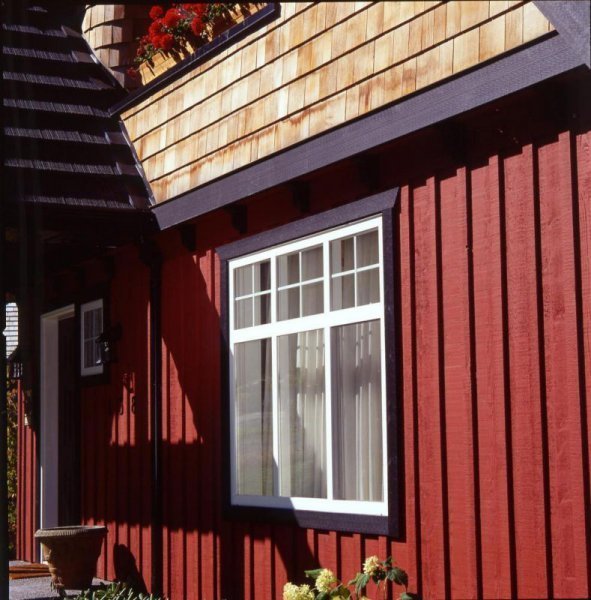 Paint provides the most surface protection against weathering and wetting by water while providing color and concealing some of the wood’s characteristics. Although paint can reduce wood’s absorption of water, paint itself is not a preservative.
Paint provides the most surface protection against weathering and wetting by water while providing color and concealing some of the wood’s characteristics. Although paint can reduce wood’s absorption of water, paint itself is not a preservative.
Alkyd-oil based primers usually offer the best shield against discoloration by water-soluble extractives. Latex paint, particularly 100% acrylic formulations, remain more flexible with age and are better able to accommodate dimensional changes by stretching and shrinking with the wood.
Solid-Color Stains
Solid-color stains are opaque finishes with fewer solids than paint. Available in a wide spectrum of hues, solid-color stains obscure the woods true color but allow some of the natural characteristics and texture of cedar to remain. Solid-color stains perform best on textured surfaces. They are non-penetrating and, like paints, form a film. A stain-blocking primer should be applied first, followed by a 100% acrylic latex-based top coat.
Natural Finishes
Water-Repellents
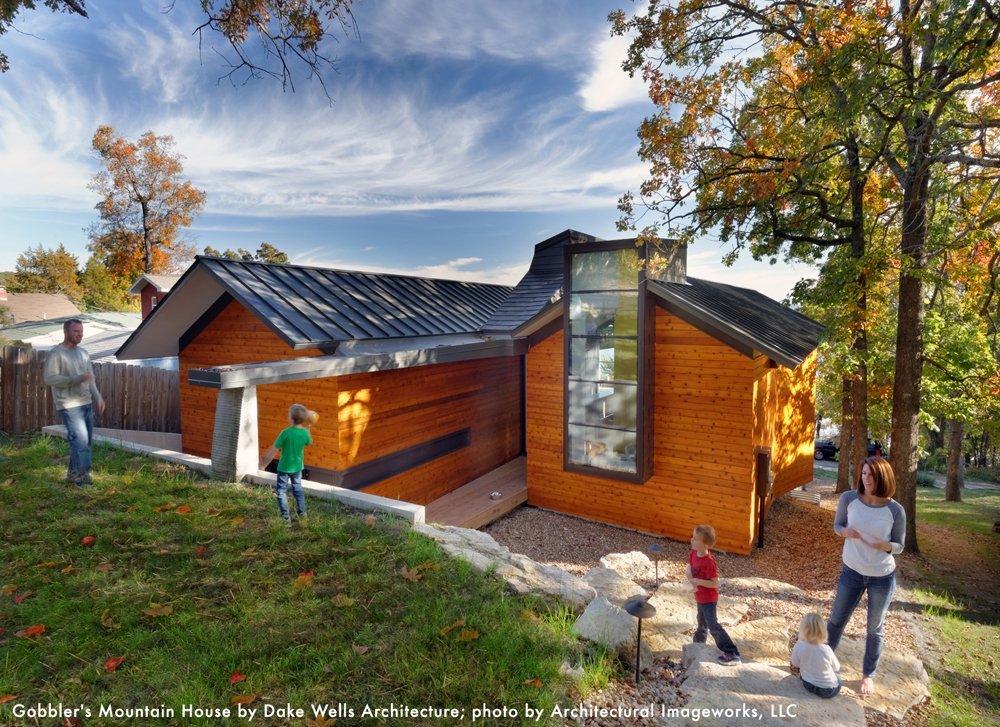 Water-repellents and water-repellent preservatives may be applied to cedar used above ground. These formulations reduce water absorption in the short term. The addition of a fungicide that inhibits the growth of mildew and decay fungi will further increase wood’s durability.
Water-repellents and water-repellent preservatives may be applied to cedar used above ground. These formulations reduce water absorption in the short term. The addition of a fungicide that inhibits the growth of mildew and decay fungi will further increase wood’s durability.
A low-wax-content water-repellent preservative applied to newly-milled cedar as a single-coat pre-treatment before painting may help reduce discoloration caused by bleeding of water-soluble extractives.
Semi-Transparent Stains
Semi-transparent stains may be latex or oil-based. The semi-transparent nature of the stain, due to its low solids content, does not block all ultraviolet radiation and some will reach the wood’s surface. Latex stains do not penetrate the surface and are not as durable.
Caution
Transparent, non-flexible, film-forming finishes such as lacquer, shellac, urethane, and varnish are not recommended for exterior use on cedar. Ultraviolet radiation can penetrate the transparent film and degrade the wood. Regardless of the number of coats, the finish will eventually become brittle, develop severe cracks and then fail.
Discoloration
Cedar Discoloration
Cedar enjoys a well-deserved reputation as a wood that takes and holds a range of finishes for extended periods. Nevertheless, the normal life of a finish will be shortened by degradation and discoloration. The causes of degradation are many and have been discussed in the preceding pages.
The causes of discoloration, though not in themselves a failure of the finish, often requires remedial treatment.
Dirt
Dirt is the most benign cause of discoloration and not usually a problem. A periodic cleaning with a mild detergent solution will usually restore the surface finish.
Mildew
Mildew applies both to the fungus and to its staining effects on both the finish and the wood. Mildew is a common cause of discoloration of paint, solid-color stains and natural finishes. Restaining does not solve a mildew problem. When it is time to refinish, clean off the mildew with a commercial mildew-remover then refinish with a coating that contains an effective mildewcide.
Extractives Bleed
Extractives bleed that discolor the finish is usually caused by moisture. To stop stains caused by extractives bleed, moisture problems must be eliminated. Mild staining is often washed away by rain over a period of weeks. In sheltered areas of the building where the stain persists, it may become darker with age and more difficult to remove. If washing with a mild detergent solution does not work, a commercial cleaner may help.
Iron Stains
Iron stains may appear in two forms: the reddish brown discoloration caused by rust, and blue-black discoloration caused by the reaction of iron from nails and other metal objects with extractives from the cedar. To prevent these stains, use only hot-dipped galvanized, aluminum or stainless steel nails when fastening cedar.
Water Stains
Water stains often occur in combination with extractive bleed and mildew growth. These stains can be difficult to remove. Scrubbing the wood with an oxalic acid solution is sometimes effective.
Caution: Handle oxalic acid solution with care as it can be harmful.
Chalking
Chalking is a property of the paint, not the cedar. It occurs when a paint film weathers or deteriorates, releasing pigment particles that act like a fine powder on the paint surface. Chalking is a common cause of fading of tinted or colored paints.
Factory Finish
Exterior Finishes for Siding and Trim Factory Finishing/Priming
For optimum performance, the WRCLA recommends that Western Red Cedar is pre-primed or pre-finished prior to job site delivery. Factory-priming, as the name implies, is performed in an industrial setting where a machine coating process applies a coating to all six sides of each board. The coated boards are then dried prior to shipment to the job sites. Pre-primed siding and trim boards delivered to a job site should be kept dry and clean prior to installation. All field cuts should be re-sealed with a primer prior to the boards being installed. Top coating should be completed as quickly as possible as most primers are not intended to be exposed to natural weathering for more than 90 days.
Factory–finishing is similar to the above process, however, it allows for the additional application of one or two topcoats of acrylic latex paint, solid stains or natural stains in job lot quantities and in the colors selected by the builder/homeowner. It is important not to overdrive nails during installation of factory finished siding, as this will damage the surrounding wood and coating. Overdriven nails must be remedied immediately by filling the depression with exterior grade wood putty specifically designed for this purpose.
Touch-up any repairs or field cuts, taking care not to smear the top coat. Properly done, factory priming/finishing provides:
- the application of a uniform coating at the recommended coverage of the primer/stain to all six surfaces of each piece (face, back, edges andends)
- a controlled environment to permit proper curing of the finish
- the wood with a coating to protect it from exposure to sunlight (UV degradation) and surface contamination by mildew and dirt
- an elimination of lap marks, streaks and shrink lines after installation • an ability to install products at any time of the year
- a product that often comes with a coating warranty
© 2025 All rights reserved
Gatsby Website Development by Jambaree
